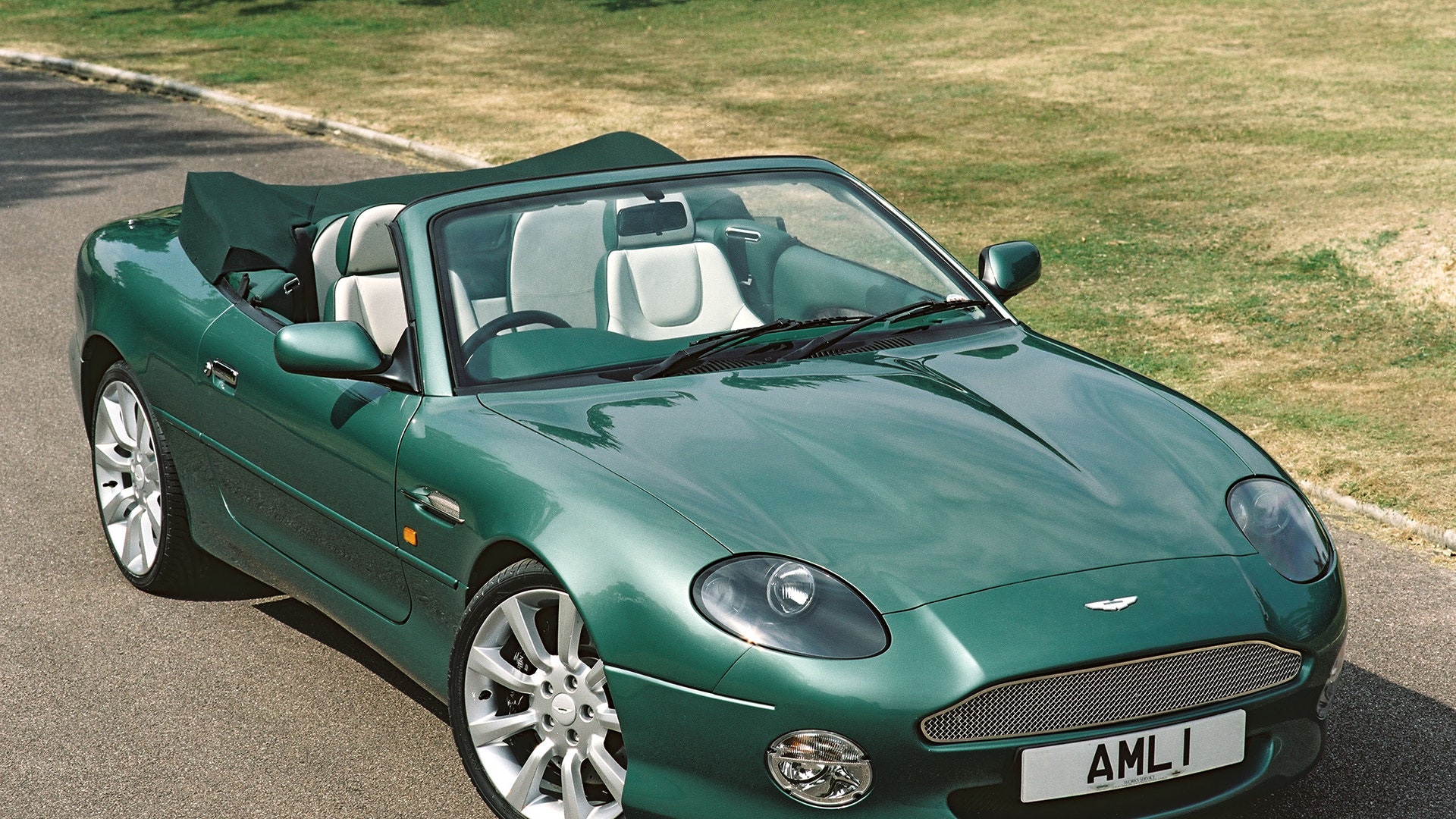What’s the ultimate Aston Martin? For concours-winning classic style, the DB5. For outright performance, the new DBS Superleggera. But you shouldn’t buy either.
No, if you’re in the market for an Aston, there’s only one model that should be on your radar: the DB7. It won’t cost you hundreds of thousands of pounds. It’s never been driven by Bond. In fact, it’s the most common of all Aston Martin cars. And it’s the only one worth your cash.
Why, you might be wondering, is a mid-Nineties sports tourer – the first modern Aston – a better choice today than a Ferrari-beating GT or a rarefied vision of Sixties grace?
For starters, a factory-fresh Aston will lose value quicker than paper currency in the Weimar Republic. A DB5? An undisputed stunner, but so rare you’ll be scared to ever wheel it out of storage – and you can hardly take it down your local garage for a fix-up.
Then you’ve got the cost. Any new AM will set you back at least £100,000 and you’ll need to drop half a million or more for the pleasure of owning a DB5. And that’s before you factor in the price of a fresh tux.
With the DB7, you’ve none of these concerns. You needn’t treat it with kid gloves and one with a good service history will throw up few surprises. And it’s already done all of its devaluing: £80,000 when new, the main variants have now plateaued around the £30,000 mark.
Sure, plenty of cars cost the average annual salary. That doesn’t mean they’re any good. But the DB7 is not just affordable for an Aston – it’s a steal for a brilliant machine in its own right.
First seen in showrooms some 25 years ago, the DB7 has never been a more appealing package as now. Beautiful body? Check. Supercharged yelp? Check. Impeccable handling, ride and balance? Check, check and check. And all with that fabled badge at the front.
That it was derived from an abandoned Jaguar concept, funded by Ford and refined by Tom Walkinshaw Racing? Irrelevant. Unlike the cynical Cygnet, the DB7 was engineered as an Aston Martin – and the British marque’s blood runs thick in its veins. It was, after all, the car that saved the company.
Purists can balk at the fact it wasn’t finessed at the firm’s spiritual home of Newton Pagnell; that it was mass-produced in the old XJ220 factory to the tune of almost 7,000 examples; that it was littered with components borrowed from other Ford-owned makes. That’s their loss, because the DB7 is a stellar GT – and a fine Aston Martin.
It’s old enough now that those pilfered bits don’t seem nearly as out of place. Thanks to the affectionate lens of nostalgia, you can look past the loaned components and enjoy the luxury of the leather interior, sitting comfortably in a cabin that feels almost classic in its analogue simplicity.
It helps that the DB7 is a real looker. Penned by Ian Callum, the smooth lines and gorgeous proportions are still some of the greatest ever to grace a GT, timeless in their understatement. It’s stylish enough that you’ll appreciate seeing it every day, yet sufficiently subtle that you can drive it down to the golf club without your fellow putters thinking you’re a flash plonker. Almost.
And then you fire it up. Growl, then purr: the first iteration of the DB7 carries a supercharged straight-six engine, good for 335bhp, a 0-60 time of 5.7 seconds and a top speed of 165mph – but it’s not raucous. Brisk when it needs to be, the motor thrums with hushed potential, delivering on its promise without peacocking.
Things are a little different with the Vantage variant. Launched in 1999, it harbours a 5.9-litre V12 that’s essentially a pair of Ford motors bolted together. And it packs quite the punch: 85bhp more powerful, 19mph faster and more than half a second quicker to sixty.
Neither motor will rival a recent Aston Martin for performance. Nor can the DB7 threaten the iconic cachet of the DB5. But that doesn’t matter: whether straight-six or V12, drop-top or coupé, manual or automatic, the DB7 is a car that’s capable, comfortable, stylish and entertaining. And it’s an Aston Martin. And it can be yours for £30,000 – or even a little bit less.
Buy a sorted one and, even if values don’t go the way of every other classic DB, you’ve got a sound investment: an Aston Martin you can enjoy.
So ditch your dreams of Bond impersonation and quit saving for that Superleggera: the DB7 might not be the fastest, nor the best equipped, nor the most legendary, but it’s the one that Goldilocks would go for. And you don’t need double-0 status to pull it off.
Now read:
The Mercedes 300SL Gullwing is the epitome of Fifties cool
